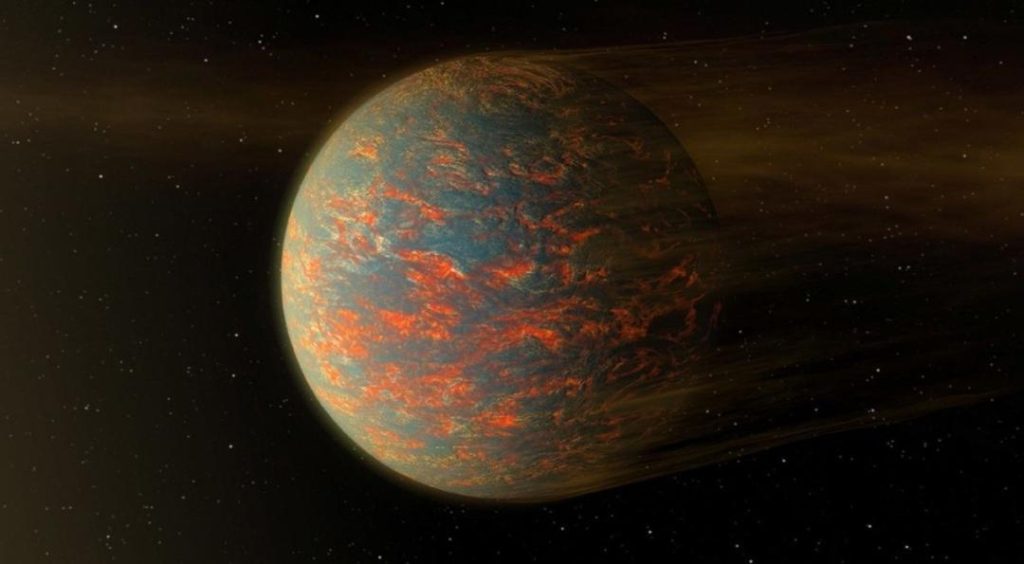
Newly-Discovered Super-Earth Heats Up & Freezes Every 300 Days
In a fascinating discovery, scientists have identified a new exoplanet, a ‘super-Earth’, orbiting a Sun-like star just 20 light-years from our own planet. This newly-discovered celestial body is unlike any other known planet, as it experiences extreme temperature fluctuations that see it swinging between scorching heat and freezing cold every 300 days. The planet, classified as a super-Earth due to its size, is bigger than our own Earth but smaller than the gas giants Neptune and Uranus.
Located in the constellation of Cygnus X-1, the super-Earth, named K2-141b, orbits its star in an oval shape, which is responsible for its extreme climate fluctuations. The star, similar to our Sun, emits a moderate amount of heat, but it’s the oval shape of the planet’s orbit that creates the dramatic temperature swings.
The Extreme Climate Cycles
The planet’s orbit is elliptical, which means that its distance from the star varies throughout the year. When K2-141b is closer to the star, it experiences extreme heat, with surface temperatures reaching as high as 2,000°F (1,093°C). This is because the star’s radiation is concentrated on the planet, causing it to heat up rapidly. However, as the planet moves further away from the star, the temperature drops dramatically, and the surface freezes, reaching temperatures as low as -200°F (-129°C).
This extreme climate cycle is unique to K2-141b, and it’s a characteristic that sets it apart from other exoplanets discovered so far. The cycle is so extreme that it’s likely to have a significant impact on the planet’s geology and potential habitability.
Implications for Habitability
The discovery of K2-141b raises questions about the potential habitability of the planet. While the extreme temperature fluctuations might make it difficult for life to thrive, the planet’s size and composition could still support life in some form.
Scientists believe that the planet’s surface temperature fluctuations would be catastrophic for most living organisms, but it’s possible that some microorganisms could adapt to the extreme conditions. The discovery of extremophile microorganisms on Earth, which thrive in extreme environments like hot springs and deep-sea vents, suggests that life can exist in conditions that would be hostile to most other forms of life.
The Discovery and Research
The discovery of K2-141b was made using NASA’s Kepler space telescope, which has been instrumental in identifying thousands of exoplanets since its launch in 2009. The telescope uses the transit method to detect exoplanets, where it measures the decrease in brightness of a star as a planet passes in front of it.
The research on K2-141b was conducted by a team of scientists led by Dr. Sara Seager, a planetary scientist at the Massachusetts Institute of Technology. The team used a combination of observations from the Kepler space telescope and follow-up observations from other telescopes to confirm the discovery and characterize the planet’s orbit and climate.
Conclusion
The discovery of K2-141b is a significant breakthrough in our understanding of exoplanetary science, and it opens up new avenues for research into the potential habitability of planets with extreme climate conditions. While the planet’s extreme temperature fluctuations might make it challenging for life to thrive, the discovery of extremophile microorganisms on Earth suggests that there may be some form of life present on K2-141b.
As scientists continue to study K2-141b and other exoplanets, we may uncover new insights into the possibilities of life beyond Earth and the conditions necessary for life to exist. The discovery of this super-Earth is a reminder of the vastness and complexity of the universe, and it’s a testament to the power of human curiosity and exploration.
Source:






